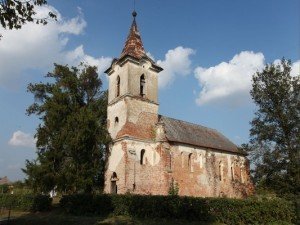The day of the reformation – 31st of October

On the 31st of October, 1517 Martin Luther posted an invitation to debate on the door of the Wittenberg Cathedral. The invitation to debate contained 95 points, or theses, concerning the sale of indulgences. Luther chose this date for posting his theses because the coming holyday would bring many of the community to services, ensuring that his statements would receive wide exposure.
The 31st of October is Reformation day for Protestants, a day when they commemorate one of the most important events in history.
The Protestant Reformation was the 16th -century religious, political, intellectual and cultural upheaval that splintered Catholic Europe, setting in place the structures and beliefs that would define the continent in the modern era.
In northern and central Europe, reformers like Martin Luther, John Calvin and Henry VIII challenged papal authority and questioned the Catholic Church’s ability to define Christian practice.
Over the centuries, the church had become deeply involved in the political life of Western Europe. The resulting intrigues and political manipulations, combined with the church’s increasing power and wealth, contributed to the bankrupting of the church as a spiritual force. Abuses such as the sale of indulgences by the clergy undermined the church’s spiritual authority. The disruption triggered wars, persecutions and the so-called Counter-Reformation, the Catholic Church’s delayed but forceful response to the Protestants.
The wind of the revolution reached many European countries, including Hungary. In the 16th century three main factors shaped the Hungarian history: the country being divided into three parts, the survival of the renaissance ideas and the appearance and spread of reformation. The preachers of the new religion propagated that there was no need for a mediator between God and the people and that the Bible must be translated into national languages.
One of the antecedents of the Hungarian reformation was the evolution of humanism in the court of King Matthias. Also, nepotism, simony and the profane church wasn’t new concepts to the society. In the battle of Mohács (1526) the Catholic Church lost seven of its hierarchs. The clergy was left with no leaders to stop the reformation.
The Protestant beliefs were brought to Hungary by students who studied in Wittenberg which was the immediate surroundings of Luther. The reformation first affected German cities and the royal court. The followers of the reformation believed that the decay of the Catholic Church was the cause that lead to a sorely tried Hungary. The Catholic Church tried to stop the spread of the new beliefs which lead to people escaping to the part of the country ruled by the Ottoman Empire. The Ottomans were much more tolerant since the reformation was against the Habsburg dynasty, just like them.

The supporters of the Hungarian reformation came from all social classes. The clergy was attracted by the worship in mother tongue, the reduction of the serfs’ burden and the elimination of celibacy. The lords liked the opportunity to get new properties due to secularization and the ‘cuius regio, eius religio’ principle which meant that they could have even more power over their serfs. Calvin’s church was like the local governments from many aspects and this attracted the citizenry. Lastly, a small part of the aristocracy also supported the reformation although most of them were afraid of losing their dignity.
The main propagator of Luther’s doctrines was Mátyás Dévai Bíró who studied in Wittenberg and spread Protestantism in the German cities of the Highland. The first translation of the New Testament by János Sylvester is also connected to the Evangelist Church.
Calvinism started spreading in the Hungarian society in the 1550s and affected mostly country towns and border front prowess. Péter Méliusz Juhász was the one who made Debrecen the ‘Calvinist Rome’ by setting up printing-houses and schools. He was one of the most famous polemists of that time. The Calvinistic Church became solid in 1562 with the Synod of Debrecen. It became the most prevalent religion of the 16th century.

Antitrinitarian communities were formed in Transylvania where they were called Unitarians. Their leader was Ferenc Dávid. Anabaptists also appeared in Transylvania but were pursued until the 17th century. Transylvania was special in the sense that even during the religious wars, the different churches managed to live in peace side by side.
By the 1570s, 75-80% of the Hungarian population converted to one of the Protestant religions. Significant Catholic blocks were only left in the Western regions controlled by the Habsburgs and in Szeklerland. Gáspár Károli translated the whole Bible into Hungarian which was first printed in Vizsoly, 1590. Permanent printing-houses functioned in several places like Debrecen and Sárvár. The new churches emphasized the importance of education and founded schools all around the country which helped civilization.
Written by Alexandra Béni
Source: Daily News Hungary





